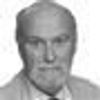It is twenty years since the Parliament of the Republic of South Africa assented to the Promotion of National Unity and Reconciliation Act. They were drawing on the Chilean model from five years earlier that had investigated the crimes of the Pinochet period. It set up the Truth and Reconciliation Commission (TRC), one of the most fascinating chapters in the transition from apartheid. The motivation was compassion, care and reparations for apartheid victims.
The Commission benefitted from what might be called its liminality. It was both a function of a state in transition and the religious vision of Archbishop Desmond Tutu who presided over it. Some of its recommendations reflect a Christian influence: "the Commission recognizes that victims and perpetrators alike need healing", and its basic theme was "restoring dignity to the victims". In the event it seemed neither fish nor fowl. Like its Chilean predecessor the Commission's mandate was to uncover the truth about past gross violations of human rights; in their emotional intensity on television its regular sessions made for compelling viewing.
As in all such moments, the amnesty provisions that offered what amounted to freedom from civil or criminal action for full disclosure, proved contentious. Taken to the Constitutional Court, a challenge to amnesty was rejected on the grounds that restorative justice was catered for in the provisions for reparations in the Act. They were never implemented.
But much of the truth came out. And very murky it was, a revelation of a "dirty war" at its dirtiest. The result was not quite as anyone had intended. Many felt cheated of justice. Others found emotional support in more or less full disclosure of what had happened to them and to their loved ones, and of how it had happened.
Other more positive results were no less unplanned. The hearings discredited the white far Right, the Afrikaner Weerstandsbeweging, and elements of the security apparatus that might have conducted a guerrilla war against the incoming ANC government. They were effectively demobilised by the truth.
The possibility of such a backlash was not fanciful. It turned out later - thanks to successful investigations and prosecutions - that secret paramilitary units had been waging a government sanctioned clandestine assassination programme for several years against "extreme cases". This consisted of predominantly extra-judicial killings after capture. The most famous was Steve Biko - probably killed because he was going to amalgamate the Black Consciousness movement with the ANC. Letter and parcel bombs were the favourite method for those outside South Africa. Those perpetrating these crimes were not "rogue" elements at work.
I remember being invited to Johannesburg to celebrate that, long after the Commission, the truth had finally emerged about the poisoning of an old friend, Frank Chikane, then general-secretary of the South African Council of the Churches. He had lived with me on the run, in England, before being spirited back into the country. On 23 April 1989, his suitcase was opened at Jan Smuts airport as he was on the way to Namibia. It was alleged that agents of Project Coast, a top-secret chemical warfare unit, led by Dr. Wouter Basson, impregnated his clothes with the anti-cholinesterase nerve toxin, paraoxon.
He was taken ill a day later and flown back to Johannesburg. There followed several bouts of nausea and violent sweating. Fortunately he was due to visit the USA to see his wife, Kagiso, in Madison where he fell seriously ill again near the University of Wisconsin Medical School. He was admitted, and transferred to a private hospital where, this time, his breathing stopped. His central nervous system was shutting down with accumulated poison; in effect he was dying . Frank was put on a ventilator and survived. CIA tests showed traces of paraoxon in his blood. He went on to become Director-General of President Thabo Mbeki's office.
None of this, of course, came out in the Truth and Reconciliation Commission. No amnesty had been sought at the TRC; highly placed people were potentially in the frame. But in a case brought in 2007, senior members of the apartheid regime, such as Adriaan Vlok, Minister of Law and Order and the security chief General Johann Van der Merwe were on the charge sheet alongside the lower ranks suspected of undertaking the attempted killing.
It is perhaps not surprising that the Commission failed to bring about reconciliation between whites and blacks in civil society in South Africa. The final deal that led to interim government, and finally Mandela's presidency and ANC rule, was the product of very sophisticated negotiators who, in different ways, loved their country. The poor did not get their reparations. Nor did they get more than a fraction of what heady expectations led them to believe was possible from black majority rule. South Africa got a lot more truth about its dirty war than Northern Ireland. But, arguably, it has achieved much the same low level of reconciliation.
